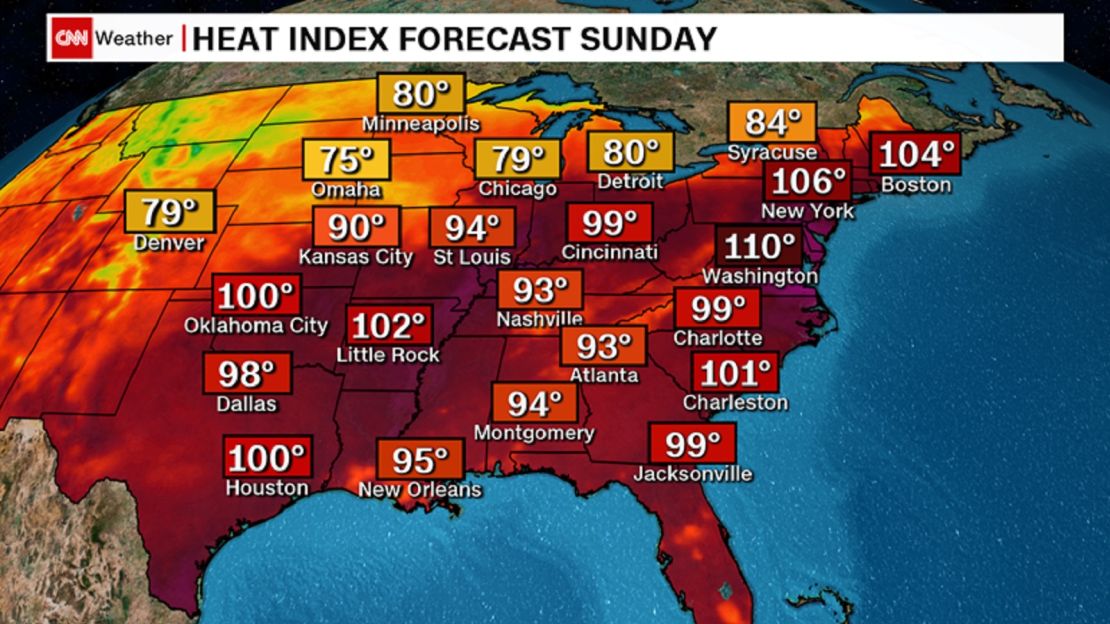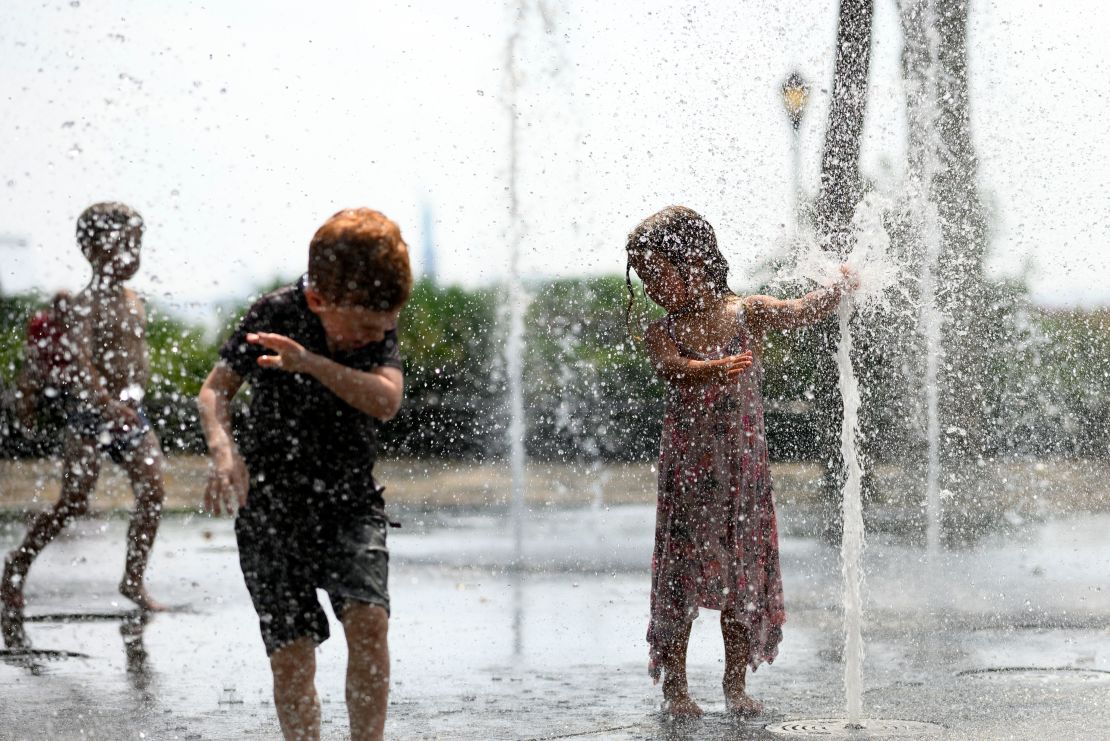The deadly heat wave that has blanketed much of the United States is in its final day.
A cold front moving through the Midwest will reach the East Coast by Monday, bringing heavy rain and cooler air, according to CNN Meteorologist Ivan Cabrera.
The front will quiet days of extreme temperatures, Cabrera said.
This week’s high temperatures prompted cities across the country to open cooling centers, issue safety instructions to residents and cancel many outdoor events. New York’s mayor declared an emergency.
Two deaths have been attributed to the high temperatures: Former NFL player Mitch Petrus, 32, died of a heat stroke after working outside Thursday during a heat advisory in Arkansas, officials said. And a woman hiking on a Maryland trail in the Washington DC suburbs died Saturday from what authorities believe was a heat-related emergency, Pete Piringer, a spokesman for Montgomery County Fire and Rescue Services, told CNN.
In pictures: Dangerous heat wave hits the US
Part of the relief comes from the dropping of overnight temperatures in the Midwest, which had often hovered near 80 degrees in the past week.
While temperatures on the East Coast and Midwest may sink down to the 70s on Monday, Sunday was still hot.
Sunday severe weather
Although down from Saturday’s 157 million, there were still more than 95 million people under a heat warning or advisory for Sunday.

The heat index has much of the Midwest feeling as if it’s in the 90s, while the East Coast faces triple digits – with Washington at the highest with 110.
Atlantic City, New Jersey, set a new heat record for the day, reaching 100 degrees, according to CNN meteorologist Gene Norman. New York airports John F. Kennedy and LaGuardia both tied 28-year-old daily heat records. It was 99 degrees at JFK and 100 at LaGuardia, temperatures not seen there on July 21 since 1991.
In Washington DC, the Fire and Emergency Medical Services Department transported 11 people to hospitals Sunday because of heat-related illnesses, department spokesperson Douglas Buchanan said. The department has responded to 64 heat-related calls since Thursday, compared to only 14 during the July 4 celebrations, when thousands filled the National Mall.
In New York, utility company Con Edison asked customers to save energy as outages rose throughout the day Sunday because of overheated equipment. By 10:24 p.m. ET., more than 52,000 of its customers were without power, according to Con Edison’s outage map, including about 33,000 in Brooklyn.
And although the more central states are being cooled a bit by the moving front, at least 346,000 people were still without power across Michigan Sunday evening because of severe weather, according to Poweroutage.US.
Staying safe in the final stretch
With one day of extraordinary heat left, officials are still asking people to take steps to stay safe.
Over the past week, the heat wave stretched from New Mexico to Maine, prompting authorities across the country to put out warnings and recommendations to help deal with the heat.
While many people – especially in regions that tend to see higher temperatures regularly – underestimate the dangers of summer heat, it annually kills more Americans on average than any other natural disaster, Cabrera said.
Those most vulnerable include the elderly, infants, children, those in cities and people who live or work outside, according to a report by the International Federation of Red Cross and Red Crescent Societies.
To reduce those dangers, the report and city officials recommend staying hydrated, avoiding being outside during peak heat hours, training medical staff and community members on heat stroke symptoms and enlisting the help of friends, family and neighbors to check on people particularly at risk.
Climate change’s impact
The threat of heat waves will become more serious across the globe and more widespread as the climate crisis continues, says Francesco Rocca, president of the International Federation of Red Cross and Red Crescent Societies.

A report by the Red Cross Red Crescent Climate Centre says 17 of the 18 warmest years on record have occurred since 2001.
“Climate projections indicate that if greenhouse gas emissions continue on their current pathway, by the year 2100 three out of four people on Earth could be subject to at least 20 days per year of potentially deadly heat and humidity levels,” the report says.
And in the United States, the number of days each year with a heat index of more than 100 degrees will more than double by mid-century, a report by the Union of Concerned Scientists says.
CNN’s Dakin Andone, Jay Croft, Artemis Moshtaghian, Alison Main, Savannah Behrmann and Theresa Waldrop contributed to this report.


































